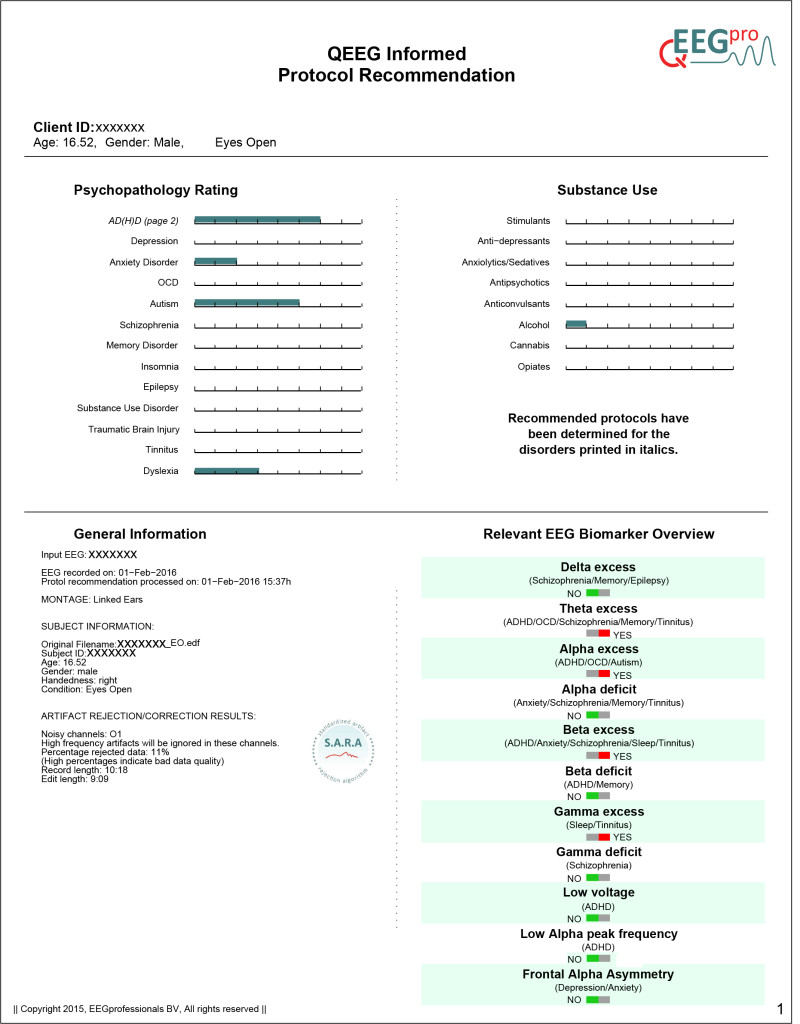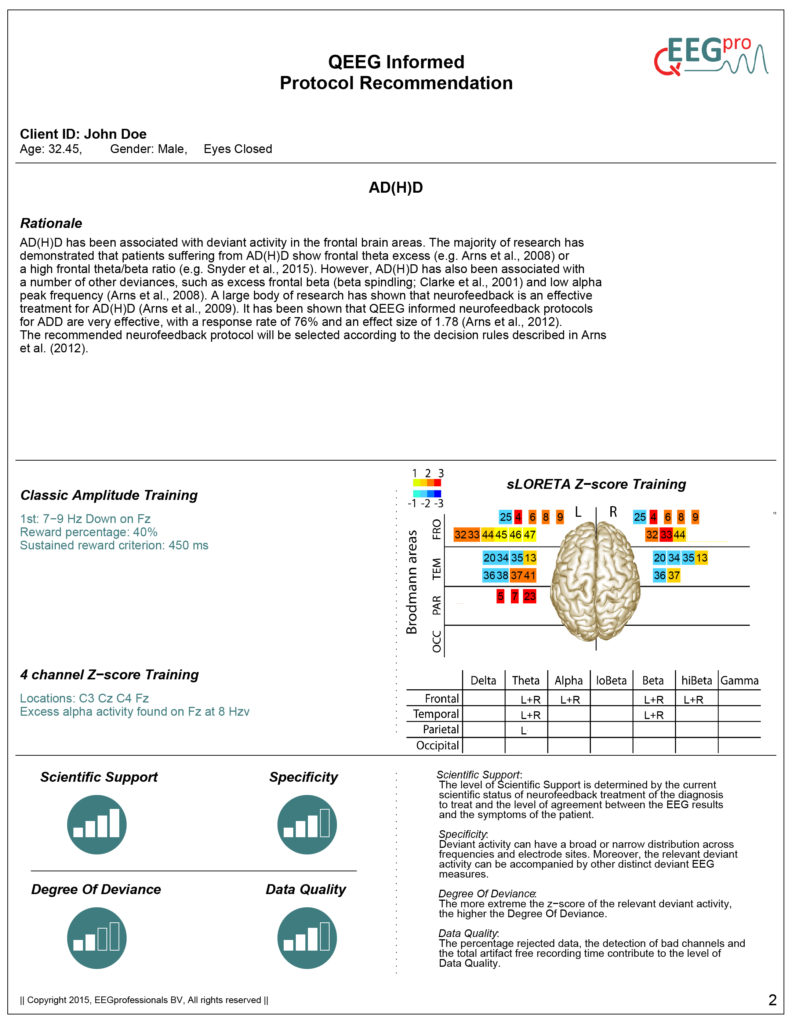The qEEG-Pro report service contains a sophisticated neurofeedback protocol recommendation system. qEEG-Pro does not simply recommend treating the most deviant EEG activity of your client. Instead, it implements vast decision trees that are based on the following factors:
1. The psychopathology of the patient
You can assess the psychopathology of your client by sending out a client questionnaire or you can fill out a therapist rating scale yourself. You can decide for what symptoms you want a neurofeedback protocol recommendation. qEEG-Pro provides protocol recommendations for the following symptoms:
- AD(H)D
- Depression
- Anxiety Disorder
- OCD
- Autism
- Schizophrenia
- Memory Disorder
- Insomnia
- Epilepsy
- Substance Use Disorder
- Traumatic Brain Injury
- Tinnitus
- Dyslexia
qEEG-Pro will recommend neurofeedback protocols based on the primary symptoms to treat, but it will also take comorbidity into account.
2. The QEEG of the patient
In the qEEG-Pro protocol recommendation report, you will get a list with relevant EEG biomarkers and whether or not these are present in your patient’s EEG. It is important to note that the presence of certain EEG biomarkers can be caused by other, functionally unrelated phenomena in the EEG. For example, Arns et al (2012) showed that high theta power can be the result of a slow alpha peak frequency. The algorithms used by qEEG-Pro take these phenomena into account when determining protocol recommendations.
3. Scientific publications on the effectivity of neurofeedback for the patient’s psychopathology
qEEG-Pro uses the latest insights regarding the effectiveness of neurofeedback for treating psychopathological symptoms. qEEG-Pro always prioritizes the recommendation of protocols that have been shown to be effective in scientific studies.
4. Scientific publications on psychopathology related deviations in resting−state EEG
Neurofeedback protocol selection is codetermined by the most recent insights in clinical neuroscience regarding the correlation between psychopathology and resting-state EEG. For example, when the scientific literature is insufficient or unclear regarding the treatment of a certain disorder, protocols are recommended that are aimed at treating the deviances that are most often associated with the disorder to treat.

